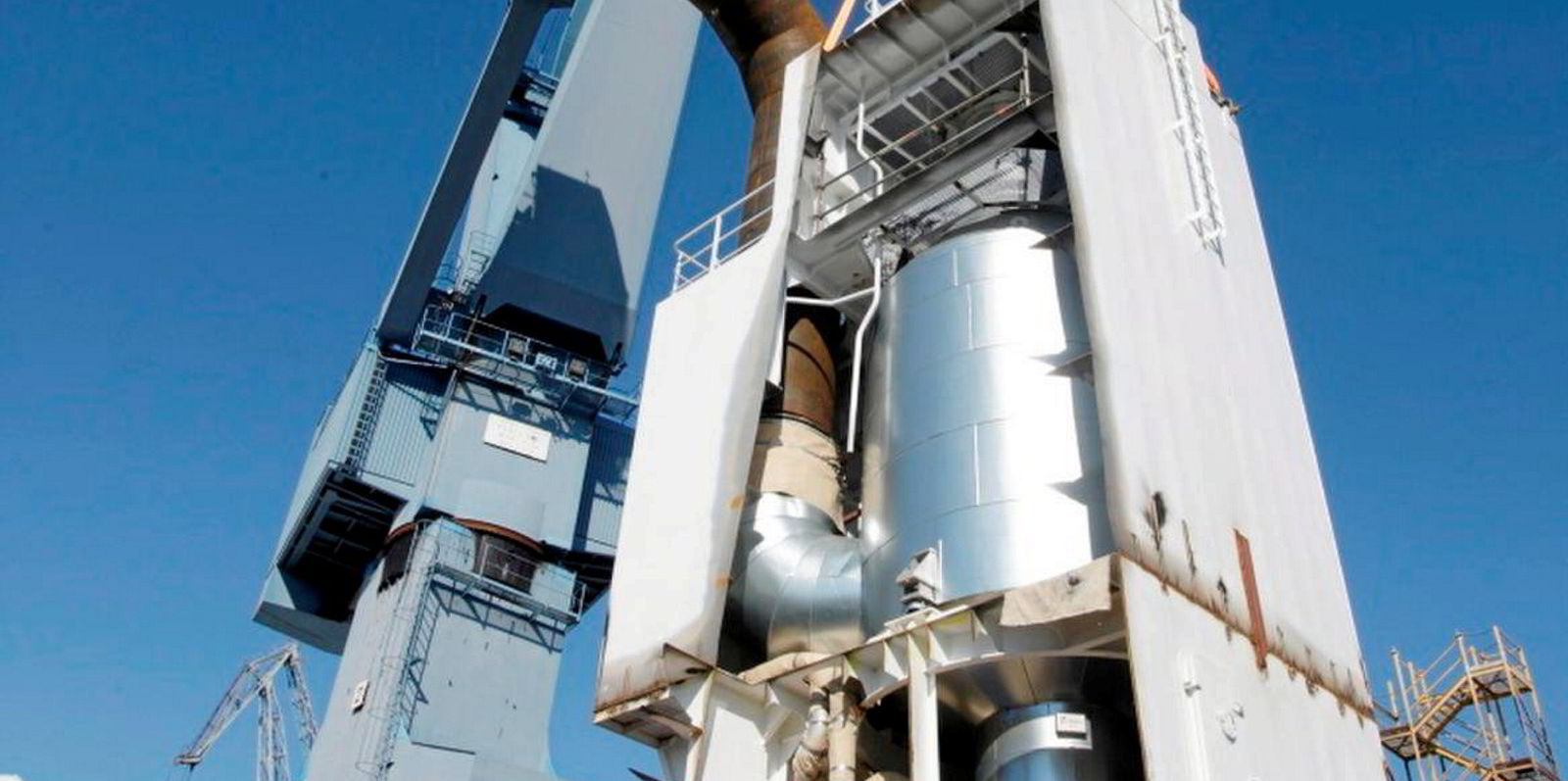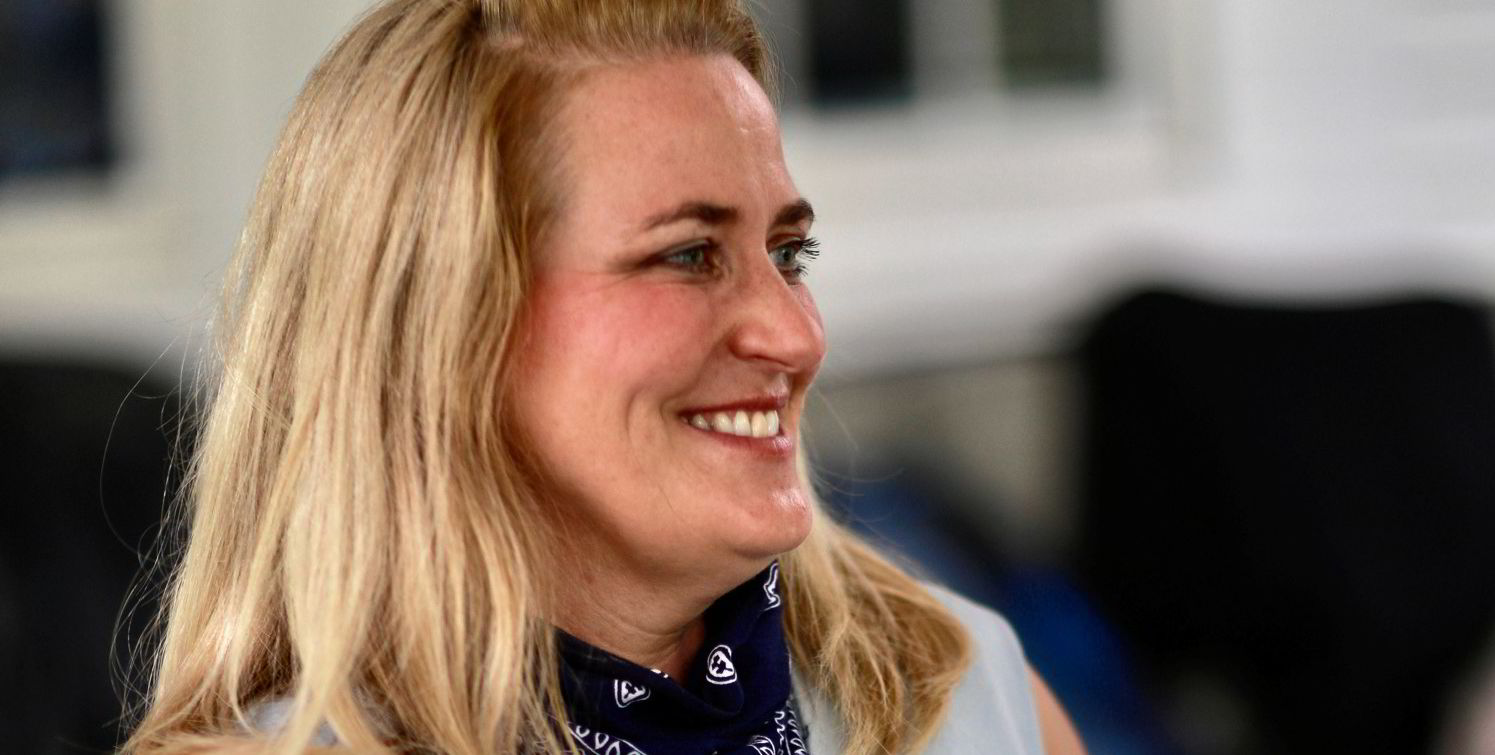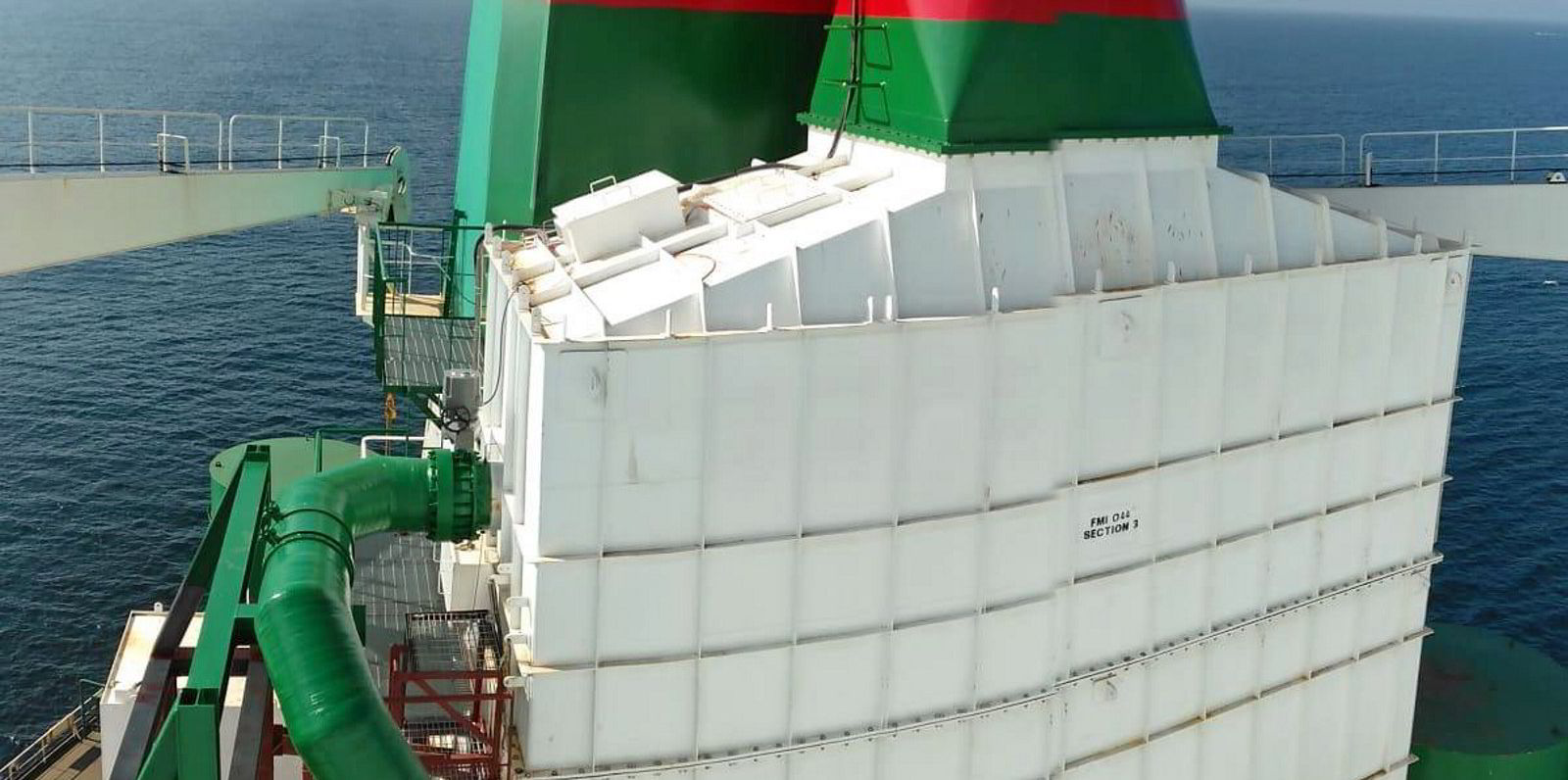Conditions are not yet right for shipping's second scrubber boom despite the widening gap between high and low-sulphur fuel prices, according to Tamara de Gruyter, president of marine systems at Finnish technology company Wartsila.
But that day may come later this year if economies recover and there is greater consistency in the spread between the bunker types.
De Gruyter told TradeWinds that the number of retrofits of exhaust cleaning systems "really came down" during the last year.
"There was very, very minimal interest because of the fuel spread," she said.
The gap between high-sulphur fuel oil (HSFO) and very low-sulphur fuel oil (VLSFO) narrowed to $40 to $60 per tonne between April and November 2020, erasing many of the benefits of still being able to run vessels on cheaper HSFO.
Opening up again
But the spread has been widening in recent months, with $80 to $100 per tonne now being seen.
"What you do see now is that customers start to think about retrofitting, but they probably need to see a slightly higher fuel spread and for it to be stable for a while," De Gruyter said.
"It's not that it's one week [of a higher spread] and we say 'let's order scrubbers again'. It probably takes stability across a few months."
De Gruyter said discussions with clients are increasing because there is a "good business case".
"The owners that have vessels with scrubbers fitted, they make more money," she said.
"It's also much more positive in the media. When the fuel spread was low it wasn't so positive, and now it seems like the whole mood around scrubbers starts to be positive again."
Scrubbers are still being fitted on the bigger merchant ships such as tankers, bulkers and boxships.
Newbuildings continuing to opt for scrubbers
"When you look at it from a newbuild perspective, that has continued — and the bigger newbuildings are either dual fuel or they decide to go for scrubbers," De Gruyter said.
"The question will be, will we get a second scrubber boom in 2021?
"This is tied up with uncertainty over Covid-19 still, because the fuel spread is indirectly tied to the economic activity in the world. So if that keeps up and the fuel spread keeps up, we might see a second boom."
She said there are still a good amount of retrofits to be done in 2021 following a record year for yards in 2020.
"There is space to do more," De Gruyter said. "I don't think the yards are fully occupied."
The benefit for owners with scrubber-fitted tonnage was illustrated by the fixture of an Okeanis Eco Tankers VLCC this month.
The 319,000-dwt Nissos Anafi (built 2020) will load Brazilian crude for a Chinese charterer in mid-February at an estimated time charter equivalent rate of $15,000 to $16,000 per day, according to Fearnley Securities.
Another source told TradeWinds that the voyage will earn in the mid-$17,000s per day, with ballast time optimised.
This is well above what non-scrubber tonnage can hope to achieve, with VLCCs averaging $7,600 per day currently, according to Clarksons Platou Securities.
Huge price gap a year ago
Before the pandemic struck last spring, owners of scrubber-fitted tonnage enjoyed an attractive discount for HFSO of between $250 and $300 per tonne in key bunkering hubs during December 2019 and January 2020.
The narrowing of this spread meant that the cost savings for burning HSFO plunged from $16,000 per day in January last year to between $3,000 and $4,000 for most of 2020, according to Gibson Shipbrokers.
But the latest upward trend in oil prices means scrubber savings have climbed to more than $5,000 per day for VLCCs.
Alan Gelder, vice president for refining at consultancy firm Wood Mackenzie, told TradeWinds that he expects the spread to reach $150 per tonne at the world’s largest bunkering hub of Singapore towards the end of the year.
Last November, Wartsila said there was a growing trend for container lines to keep vessels out of retrofitting yards to make the most of booming rates.








